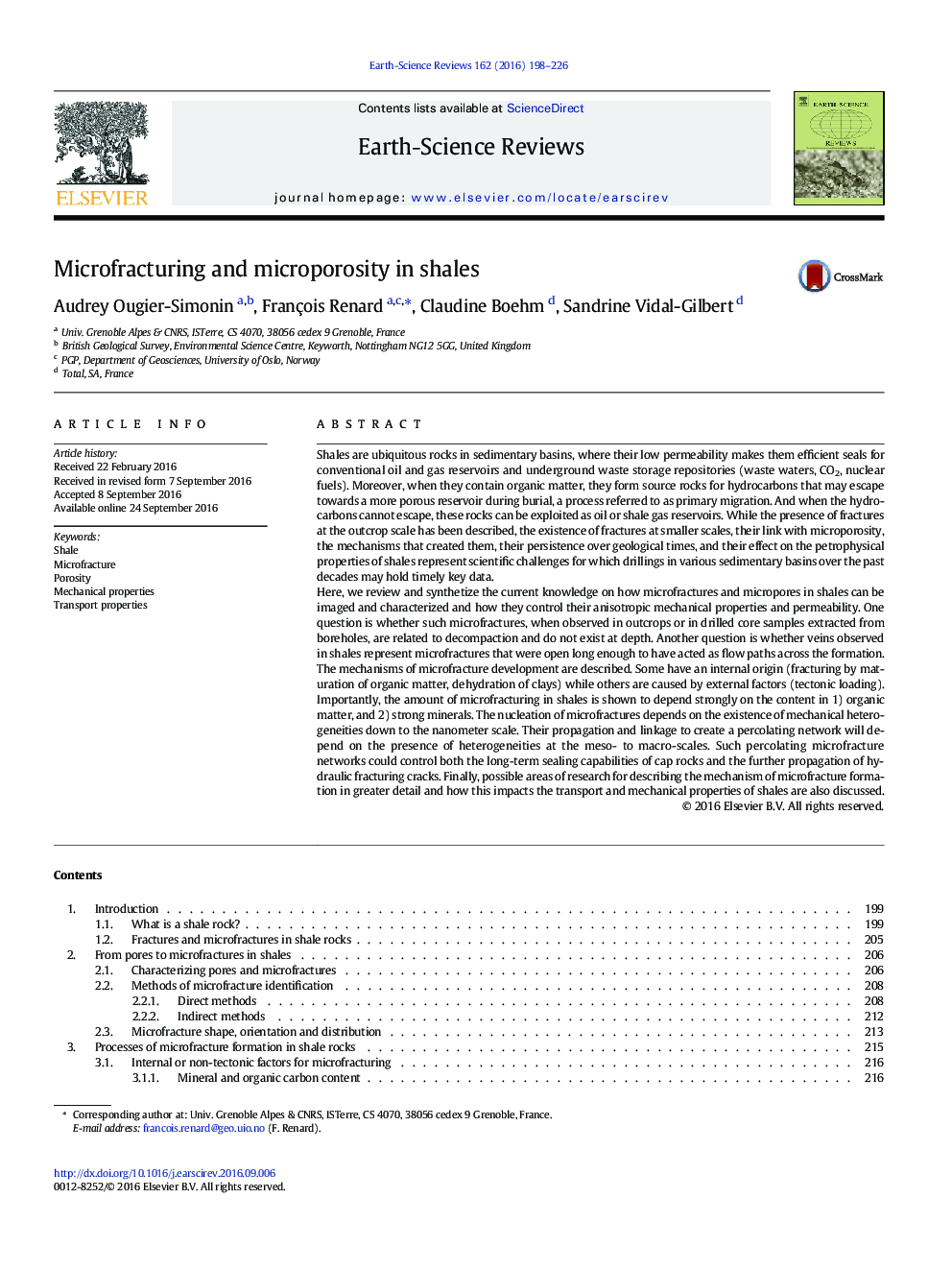| Article ID | Journal | Published Year | Pages | File Type |
|---|---|---|---|---|
| 6442767 | Earth-Science Reviews | 2016 | 29 Pages |
Abstract
Here, we review and synthetize the current knowledge on how microfractures and micropores in shales can be imaged and characterized and how they control their anisotropic mechanical properties and permeability. One question is whether such microfractures, when observed in outcrops or in drilled core samples extracted from boreholes, are related to decompaction and do not exist at depth. Another question is whether veins observed in shales represent microfractures that were open long enough to have acted as flow paths across the formation. The mechanisms of microfracture development are described. Some have an internal origin (fracturing by maturation of organic matter, dehydration of clays) while others are caused by external factors (tectonic loading). Importantly, the amount of microfracturing in shales is shown to depend strongly on the content in 1) organic matter, and 2) strong minerals. The nucleation of microfractures depends on the existence of mechanical heterogeneities down to the nanometer scale. Their propagation and linkage to create a percolating network will depend on the presence of heterogeneities at the meso- to macro-scales. Such percolating microfracture networks could control both the long-term sealing capabilities of cap rocks and the further propagation of hydraulic fracturing cracks. Finally, possible areas of research for describing the mechanism of microfracture formation in greater detail and how this impacts the transport and mechanical properties of shales are also discussed.
Related Topics
Physical Sciences and Engineering
Earth and Planetary Sciences
Geology
Authors
Audrey Ougier-Simonin, François Renard, Claudine Boehm, Sandrine Vidal-Gilbert,
